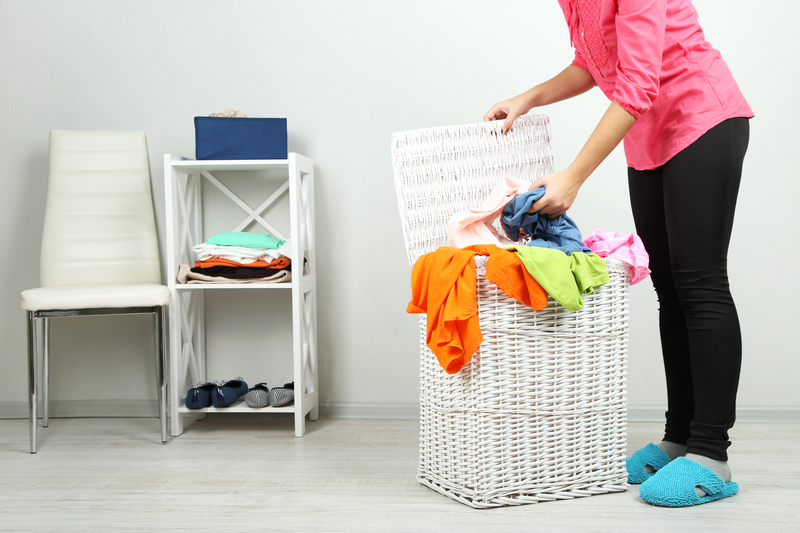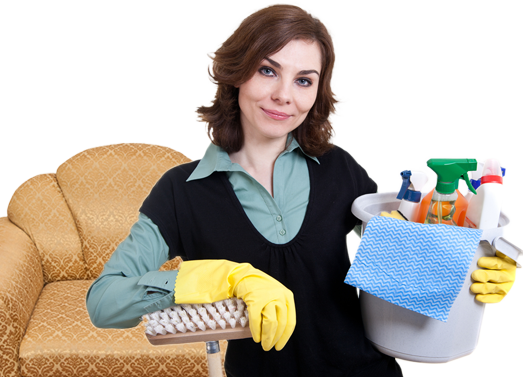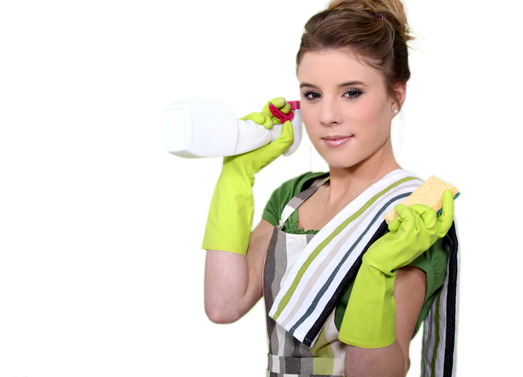The Best Cleaning Hacks to Tackle Burnt Stovetop Residue
Posted on 26/05/2025
The Best Cleaning Hacks to Tackle Burnt Stovetop Residue
Burnt stovetop residue is more than just an eyesore--it can also affect cooking performance, harbor bacteria, and reduce the lifespan of your stove. If you've ever cooked with a spillover, you know how stubborn those burnt spots can be. But don't worry: with the right techniques and home cleaning hacks, you can tackle burnt stovetop residue and restore your cooktop to its former glory. In this comprehensive guide, you'll learn the most effective cleaning tricks, from natural solutions to store-bought cleaners, that are trusted by cleaning experts everywhere.
Understanding Burnt Stovetop Residue
Before diving into the best stovetop cleaning hacks, it's important to understand what causes that stubborn burnt-on residue to begin with. Burnt residue mostly comes from:
- Food spills (sauces, soups, and boiling water that overflow)
- Spills from sugary substances that easily caramelize
- Oil splatters that get cooked onto the surface
- Temperature extremes causing food and grease to adhere
Once these particles hit a hot stove, they quickly burn and form a stubborn layer that's often tough to remove. The surface type--whether you have a glass cooktop, ceramic, induction, or gas burner--will also change your cleaning approach.

Essential Supplies for Cleaning Burnt Stovetops
Gathering the right cleaning supplies is key to effectively removing burnt-on gunk from your stovetop. Here are the must-have tools and products:
- Baking soda (a natural, gentle abrasive)
- White vinegar (cuts through grease and grime)
- Non-scratch sponges or scrubbers
- Plastic or silicone scrapers
- Microfiber cloths
- Dish soap
- Lemon or lemon juice
- Commercial stovetop cleaner (optional for tough stains)
- Spray bottle for mixing solutions
- Paper towels or old towels
Having these supplies on hand ensures you're always prepared to tackle burnt-on stains and buildup before they become persistent problems.
Precautionary Measures Before You Start Cleaning
For safety and the best results, always:
- Allow your stovetop to cool completely before cleaning.
- Unplug electric stoves when cleaning near coil burners.
- Read your stovetop manufacturer's guidelines for recommended cleaners and warnings about abrasive tools.
- Test all cleaning solutions on a small, inconspicuous area first, especially on glass or ceramic tops.
Tip:
Never use steel wool on glass or induction stovetops. It can cause scratches that are almost impossible to repair!
Top Cleaning Hacks for Removing Burnt Stovetop Residue
Let's dive into the most successful stovetop cleaning hacks for cutting through even the toughest burnt residues.
1. The Baking Soda and Vinegar Method
This classic duo is a favorite for a reason. Baking soda's mild abrasiveness, combined with vinegar's natural acidity, lifts and loosens burnt food and grease without scratching delicate materials.
- Remove any loose debris from the stovetop.
- Sprinkle a generous layer of baking soda directly onto the burnt areas.
- Fill a spray bottle with equal parts white vinegar and water, and spray the area liberally. The bubbling reaction helps to break down tough residues.
- Let the mixture fizz for about 10-15 minutes.
- Use a damp non-scratch sponge to gently scrub the area in a circular motion.
- Wipe clean with a microfiber cloth and repeat as needed.
2. Steam Away Stubborn Residue
Steam cleaning is a natural and highly effective way to loosen burnt-on gunk without harsh chemicals. Here's how to steam clean your stove:
- Boil a small pot of water on the affected burner for about ten minutes. The rising steam will help soften stuck-on food.
- Carefully remove the pot and, once the stovetop cools slightly but is still warm, use a cloth to wipe away loosened debris.
- If needed, follow up with the baking soda paste for remaining stains.
3. Lemon and Salt Scrub
Lemon's natural acidity cuts through burnt residue, while salt acts as a gentle abrasive. This method deodorizes and brightens your stovetop as it cleans.
- Cut a fresh lemon in half and dip the cut side in coarse salt.
- Rub the lemon onto the burnt residue, squeezing gently to release juice as you scrub.
- Let the mixture sit for five minutes, then wipe away with a damp cloth.
- Buff dry with a clean microfiber towel.
4. Soaking Burner Grates and Drip Pans
For gas stoves, grates and burner caps can collect massive buildup over time. Deep clean them with this hack:
- Remove all grates and burner caps.
- Soak them in hot, soapy water for 20-30 minutes.
- Sprinkle baking soda over stubborn spots and scrub with a brush or non-metallic pad.
- For really tough stains, create a paste of baking soda and water, apply, and let it sit overnight before scrubbing.
- Rinse thoroughly and dry before reassembling.
5. Razor Blade Scraping (For Glass and Ceramic Tops Only)
A razor blade scraper can remove the most persistent burnt patches, but only use this method on glass or ceramic surfaces and never on coated or metal stovetops.
- Hold the razor blade at a 45-degree angle.
- Gently scrape burnt residue, moving slowly and steadily.
- Wipe away debris and follow up with a vinegar spray or stovetop cleaner.
- Handle the razor blade carefully to avoid injury and never use excessive force.
Natural Remedies to Remove Burnt-On Stovetop Stains
If you prefer eco-friendly cleaning solutions or want to avoid harsh chemicals, try these all-natural tricks:
- Hydrogen Peroxide Paste: Mix baking soda with hydrogen peroxide to form a thick paste. Apply, let sit for 15 minutes, and scrub gently.
- White Vinegar Soak: Use a cloth soaked in vinegar, lay it over the burnt spots, and let it sit for 10 minutes before wiping clean.
- Dish Soap and Hot Water: For lighter residues, a mixture of dish soap and hot water works wonders when applied with a sponge.
- Borax: Sprinkle borax over burnt areas, cover with a damp towel, let sit, then scrub and rinse thoroughly.
Best Practices for Different Types of Stovetops
Different stovetops require specific care to avoid surface damage. Follow these expert tips for your type of cooktop:
Gas Stove
- Remove burner covers, grates, and any detachable parts before cleaning.
- Scrub burners with a brush and soak parts as described above.
- Use a toothpick or straightened paperclip to clear burner holes if necessary.
Electric Coil Stoves
- Unplug the coils and wipe them down with a damp cloth--never submerge in water.
- Clean drip pans with baking soda paste or in hot soapy water.
Glass and Ceramic Cooktops
- Always use non-abrasive cleaners and avoid harsh pads.
- Employ a razor blade scraper for severe spots, but be gentle to avoid scratches.
- Buff the surface dry with a microfiber cloth to prevent water spots.
Common Mistakes to Avoid When Cleaning Your Stovetop
Be aware of these pitfalls that can inadvertently damage your stovetop or reduce cleaning efficiency:
- Using steel wool, abrasive pads, or harsh powders on sensitive surfaces like glass or ceramic, as these will cause permanent scratches.
- Letting residue sit for days, which makes burnt gunk more difficult to remove.
- Failing to rinse off all cleaning products, potentially leaving behind residues that smoke during your next use.
- Mixing strong chemical cleaners (like ammonia and bleach), which can be dangerous and produce toxic fumes.
How to Prevent Burnt Residue: Pro Maintenance Tips
Prevention is always easier than extensive scrubbing. Use these strategies to keep burnt-on messes off your stovetop:
- Wipe spills immediately. As soon as a spill occurs, wipe it away with a damp cloth when the surface is safe to touch.
- Use splatter guards when frying or using high heat.
- Clean regularly every week to prevent buildup.
- Line drip pans with foil (for gas and electric coil stoves) for easier cleanup.
- Set a routine: a quick daily wipe-down and a deep clean once a week preserves both function and appearance.

FAQs: Burnt Stovetop Residue Cleaning Hacks
Can I use oven cleaner on my stovetop?
No, unless the manufacturer specifically says it's safe. Most oven cleaners are too caustic for stovetop surfaces, especially ceramic and glass cooktops.
What if my stovetop still smells burnt after cleaning?
Boil a pot of water with lemon slices or vinegar on the stove for 10-15 minutes to freshen the air and neutralize odors.
How do I clean knobs and controls?
Remove knobs if possible, clean with soapy water, rinse, and dry--never submerge electrical parts.
Conclusion: Say Goodbye to Burnt Stovetop Messes
With these top cleaning hacks for tackling burnt stovetop residue, your kitchen can remain sparkling clean and inviting. By using natural ingredients and the correct tools, you can restore even the messiest stove to a pristine shine without unnecessary chemicals. Remember, regular cleaning and quick spill response are your best allies in keeping burnt-on messes at bay. Apply these tips, and your stovetop will look--and perform--better than ever!
Now that you're equipped with the best cleaning hacks for stovetop stains, share your own tips and results in the comments below. Happy cleaning!





